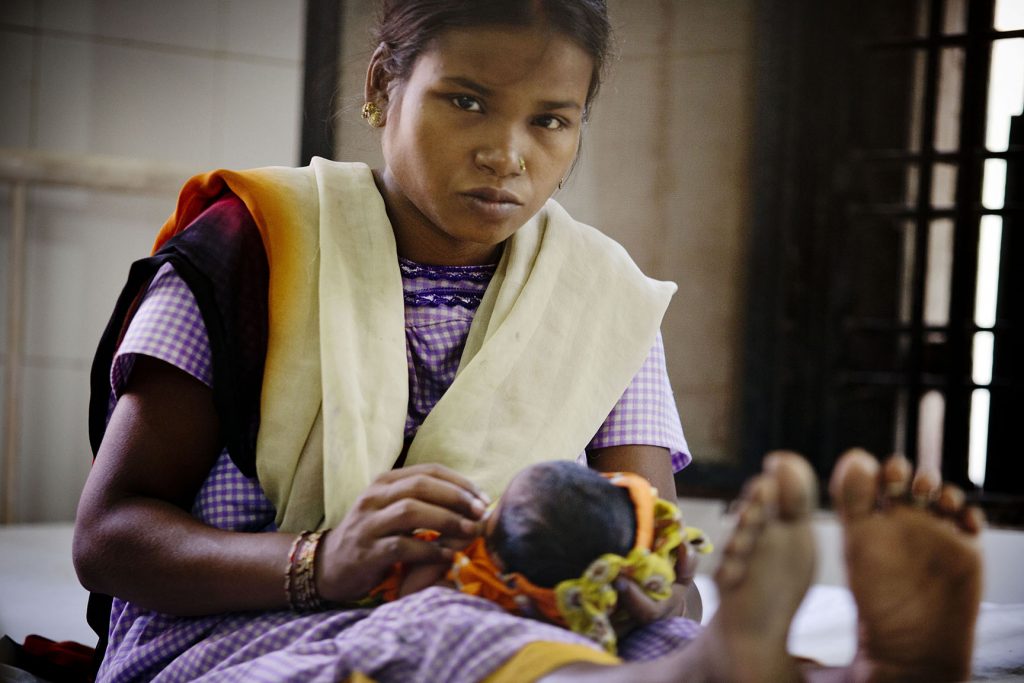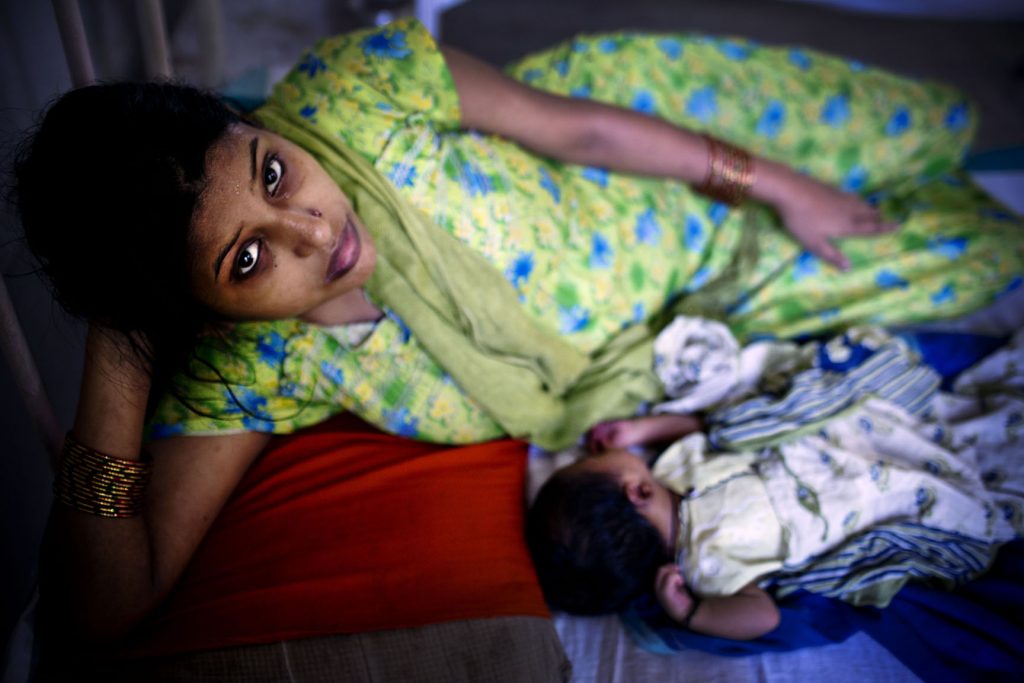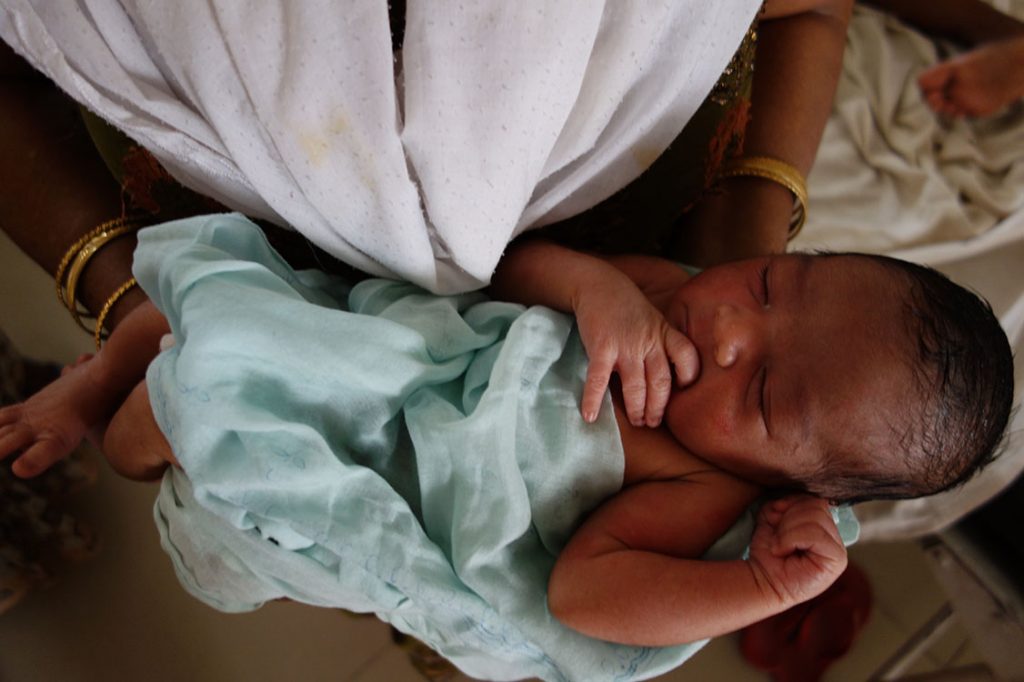India’s decision 30 years ago to incentivize women to give birth at a health facility helped drive a dramatic decrease in the country’s maternal mortality rate—a 77 percent decline from 1990 to 2015. The initiative, known as Janani Suraksha Yojana, brought millions of women to health care institutions to deliver safely with skilled health care providers. But over time, the influx of so many mothers at facilities stressed the health system. The quality of care began to suffer, medicalization of pregnancy grew as private facilities became popular, and progress stalled.

Today, with an eye to reducing India’s maternal mortality ratio from 113 to 70 per 100,000 live births and neonatal mortality from 32 to at least as low as 12 per 1,000 live births, the Indian government is turning to midwifery as one of its key strategies.
Globally, midwifery is recognized as one of the most effective best-buys. According to the Lancet, a full package of midwifery services—including family planning—can avert 83 percent of all maternal deaths, stillbirths and newborn deaths. Further, educating midwives to international standards has economic benefits beyond the specific savings from improved short-term clinical outcomes and reduced interventions. The decision to establish midwifery as an advance practice specialty for India’s nurses makes sense.

And yet, the question has been raised, even by those in public health, who is a midwife and what do they do? The oft held view of a midwife as one who helps a woman give birth, or cuts the cord after birth, is mistakenly narrow. The truth is, midwives provide a wide range of sexual and reproductive health services from pre-pregnancy through the postnatal period. They ensure a strong, woman-centered approach, providing continuity of care to women and their babies with compassion and dignity. Evidence suggests that high-quality midwifery services result in reduced interventions during labor, decreased need for pain relief, improved psychosocial outcomes and increased birth spacing.
The payoff is immense, with mothers and children even in remote areas receiving the quality care that every individual deserves. In high-income countries, such as the United Kingdom, Sweden, Norway and France, midwives oversee births of most expectant and new mothers, allowing obstetricians to concentrate on high-risk births. In Canada and New Zealand, the skills of midwives are so highly regarded that they manage complex cases. These countries have much lower maternal and newborn mortality than India. Their investment in midwifery services saves lives.

In 2018, the Indian government decided to prioritize investment in a dedicated cadre of professional midwives, the nurse practitioner midwife (NPM). This advanced nursing cadre would provide high-quality maternity services in midwife-led care units emphasizing interprofessional collaboration and teamwork. Recognizing that pregnancy and labor are not diseases requiring treatment and that most women, with the right support, can give birth without complications led to this high-level policy decision. A system of triage to identify normal and complicated cases, supported by established referral linkages to specialists, would also help reduce unnecessary interventions or need to hasten labor that would likely result in birth by caesarean section.
Over time, this investment would bring high-quality care closer to the community while reducing the burden on higher-level health facilities.
We have been wanting to curb our high caesarean rates for (a) long (time) now, and midwives are known for motivating mothers for natural births.”
Dr. Poonam Shiv Kumar, Chief Obstetrician/Gynecologist at Mahatma Gandhi Institute of Medical Sciences, a national midwifery training institute in Wardha, Maharashtra
Midwives also help alleviate the human resources challenge faced by medical colleges, Dr. Kumar adds: “With them (alongside laboring women), we are confident of compassionate and family centered care.”
The Indian government has taken a comprehensive approach, starting with reviewing the existing laws and legislation for nursing and midwifery, strengthening education and leadership, supporting the development of relevant career pathways, and establishing midwifery-led care services for women across socioeconomic strata. With an acute shortage of competent and confident health providers, especially at the lower levels, poor-quality care, disrespect and abuse are deterrents to seeking lifesaving maternity services.
NPMs will have skills that meet global standards in midwifery-led services. Envisioned as a specialized role, the NPM would not perform other general nursing roles. This delineation will help ensure skills retention and attract nurses passionate about providing woman-centered maternity care. They will work closely with, and complement the role of, existing health care providers who offer routine maternity care.
“This specialized workforce with training of international standards will . . . enable women and newborns to experience high-quality, dignified and respectful care,” says Vandana Gurnani, Additional Secretary & Mission Director of the National Health Mission for India’s Ministry of Health and Family Welfare.
The investment in advancing nursing education through an enhanced professional role could not be more timely. The International Year of the Nurse and Midwife in 2020 marked the beginning of a decade of change during which India will strengthen its nursing and midwifery workforce. We have made a promising start and need to build momentum to improve the health and well-being of all mothers and their babies, no matter where they live.
Dr. Kamlesh Lalchandani is Director, Programs at India Country office, Jhpiego, a Johns Hopkins University affiliate. Views expressed by the author are his own.



